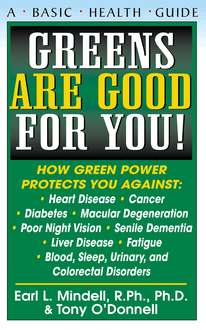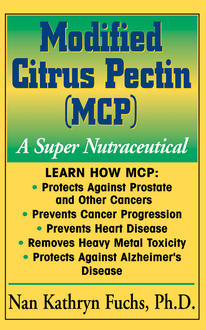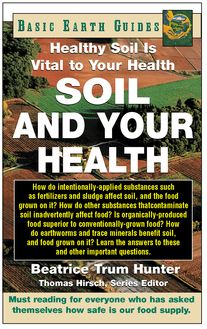PADMA , livre ebook
34
pages
English
Ebooks
2004
Vous pourrez modifier la taille du texte de cet ouvrage
Obtenez un accès à la bibliothèque pour le consulter en ligne En savoir plus
Découvre YouScribe en t'inscrivant gratuitement
Découvre YouScribe en t'inscrivant gratuitement
34
pages
English
Ebooks
2004
Vous pourrez modifier la taille du texte de cet ouvrage
Obtenez un accès à la bibliothèque pour le consulter en ligne En savoir plus
Publié par
Date de parution
01 janvier 2004
Nombre de lectures
0
EAN13
9781591206712
Langue
English
Publié par
Date de parution
01 janvier 2004
Nombre de lectures
0
EAN13
9781591206712
Langue
English
The information contained in this book is based upon the research and personal and professional experiences of the author. It is not intended as a substitute for consulting with your physician or other healthcare provider. Any attempt to diagnose and treat an illness should be done under the direction of a healthcare professional.
The publisher does not advocate the use of any particular healthcare protocol but believes the information in this book should be available to the public. The publisher and author are not responsible for any adverse effects or consequences resulting from the use of the suggestions, preparations, or procedures discussed in this book. Should the reader have any questions concerning the appropriateness of any procedures or preparation mentioned, the author and the publisher strongly suggest consulting a professional healthcare advisor.
Series Cover Designer: Mike Stromberg
Editor: Carol Rosenberg
Typesetter: Gary A. Rosenberg
Basic Health Guides are published by
Basic Health Publications, Inc.
28812 Top of the World Drive
Laguna Beach, CA 92651
1-800-575-8890 • www.basichealthpub.com
Copyright © 2013 by Nan Kathryn Fuchs
ISBN: 978-1-59120-671-2
All rights reserved. No part of this publication may be reproduced, stored in a retrieval system, or transmitted, in any form or by any means, electronic, mechanical, photocopying, recording, or otherwise, without the prior written consent of the copyright owner.
Printed in the United States of America
10 9 8 7 6 5 4 3 2 1
Contents
Introduction to the Updated & Expanded Edition
A History of Tibetan Medicine
1. Understanding Tibetan Medicine
2. The Discovery of Padma Basic
3. Padma Basic and Healthy Circulation
4. Padma Basic and Inflammation
5. Padma Basic and the Immune System
6. Padma Basic and the Lungs
7. Padma Basic and Cancer
8. The Future of Padma Basic
9. How to Use Padma Basic
Conclusion
Appendix: Contents of Padma Basic
Resources
References
About the Author
Introduction to the Updated and Expanded Edition
I n the 1960s, an ancient Tibetan herbal formula was introduced to Switzerland, carried thousands of miles and preserved through multiple generations from its original Himalayan origins. Since its “discovery” by Swiss pharmaceutical scientist Karl Lutz, this formula, known in the United States as Padma Basic®, has been the subject of over fifty published clinical studies. In fact, this remarkable preparation remains one of the most widely researched herbal formulas in the world. As the impressive body of scientific evidence about Padma Basic expands, its reputation as a powerful and versatile therapy continues to grow as well. Today, this unique combination of twenty-one natural ingredients is widely regarded as a safe and effective remedy, useful for some of our most critical health concerns including heart disease, chronic inflammation, and cancer.
When the original edition of this book was published in 2003, the information was enthusiastically received by patients and doctors of diverse backgrounds. From conventional medical practitioners to integrative physicians and health-conscious consumers, people were eager for substantial data on natural remedies. As a result, the number of health professionals recommending Padma Basic grew beyond traditional holistic practices. Integrative MDs, dentists, nurse practitioners, cardiologists, osteopaths, and many others began to discover Padma Basic’s remarkable properties. Patients shared the research with their doctors, and more doctors began recommending Padma Basic to their patients.
This revised, updated edition of the original Padma book includes two new studies on the formula. One is a meta-analysis highlighting Padma Basic’s benefits against intermittent claudication and peripheral arterial occlusive disease (PAOD). The other is a clinical study demonstrating Padma Basic’s efficacy in addressing acute dental pulpitis and as a possible root canal alternative. Both of these studies add further weight to Padma Basic’s extensive resume of published clinical data.
In fact, as peer-reviewed research on Padma Basic continues, this unique formula may be regarded as a significant icon, symbolizing the advancement of integrative medicine today. With its impressive credentials and widespread use, Padma Basic represents the bridging of East and West; the scientific substantiation of ancient botanical wisdom; and the strategic application of herbs and nutrients that offer remarkable healing benefits. Most notably, an essential principle of integrative medicine is clearly reflected in Padma Basic’s formulation: a synergistic blend of powerful yet gentle ingredients that fight disease and simultaneously support health from multiple angles.
In the years to come, I hope to see this dynamic integration of science and tradition gain even greater momentum, as leading research continues to advance our understanding of nature’s most powerful healers.
—Nan Kathryn Fuchs, PhD
A History of Tibetan Medicine
M ore than two thousand years ago, high in the Himalayas, Tibetan medicine was born. It evolved out of the recognition of a strong connection between man and nature, and its remedies were made from local herbs, spices, and native plants. Tibetan doctors developed herbal formulas over the centuries, carefully documenting the most effective blends for future generations. Fortunately, part of each doctor’s training was to memorize these ancient texts, for when the Chinese invaded Tibet in 1950 and most medical textbooks and doctors were destroyed, many of these formulas survived. Padma Basic is one of them. Used for the past fifty years in the treatment of cardiovascular disease, immune enhancement, multiple sclerosis, asthma, chronic infection, cancer, and more, Padma Basic is the most well known of all Tibetan herbal formulas.
Tibetan medicine is based on the principle that health is achieved through balance in all areas of our lives. We should not be too sad or too happy, too carefree or too worried, too warm or too cold. In keeping with these principles, Padma Basic is a powerful antioxidant formula that helps restore balance in part by cooling the body internally. Many of the ingredients in Padma Basic increase circulation and reduce inflammation, while also regulating immunity. For this reason it is used extensively for heat-related conditions, poor circulation, inflammation, and infections.
Padma Basic has been widely studied for circulatory disorders like peripheral artery disease, arteriosclerosis, and intermittent claudication. It also suppresses an overactive immune system and boosts low immunity, making it a powerful and safe immune regulator, useful for many autoimmune issues. As if this wasn’t enough, research has found Padma Basic to be effective in the treatment of asthma, diabetes, multiple sclerosis, and cancer. Yet despite this impressive body of data, it looks like we have just begun to understand a fraction of Padma Basic’s many applications.
Of all herbal combinations, Padma Basic appears to be one that is most ideally suited to diseases of the twenty-first century. These life-threatening conditions, such as heart disease, cancer, and type 2 diabetes, represent a class of illnesses termed “Western diseases” because they’re commonly linked to imbalances in diet, lifestyle, and environmental factors. As a comprehensive Tibetan herbal formula, Padma Basic supports the treatment of these diseases because it functions on various levels to bring the body back into balance.
1
Understanding Tibetan Medicine
T ibetan medicine is one of many traditional medical systems around the world that is rooted in the concept of balance. When we are in balance we are healthy, while imbalances often lead to illness. This ancient practice of medicine is a complex system that reflects the close relationship between man and nature. At the very heart of Tibetan medicine are three subtle principles or bodily energies. These energies—wind, bile, and phlegm—have both physical and emotional properties.
Wind is associated with movement, including the circulation, digestion, and the nervous system. Bile relates to the metabolism and liver function, and phlegm is connected to anything that lubricates the body and the memory.
Within these three bodily energies are five elements: air, fire, water, earth, and ether. Each one, except ether, plays a role in the classification of illnesses that are considered hot, cold, or neutral. Too much heat or cold creates imbalance, and imbalance leads to disease. Inflammatory bowel disease is one example of excessive heat, while a sluggish digestion can be a sign of too much cold. An illness is often a result of an excess of either one or the other.
The three bodily energies affect the way we feel both physically and mentally, and we are healthy when there is harmony between them. Tibetan doctors believe that imbalances between these energies often originate from three emotional excesses. The first one is greed, or a continuous craving for power and material possessions. The second emotional excess is envy or anger toward people who have more than we do. The third, ignorance, is based on a refusal to see things as they are and to accept them. So an important aspect of Tibetan medicine consists of recognizing these excesses and bringing our thoughts and desires into balance. Another is recognizing the role of proper diet on our health.
The foundation of Tibetan medicine is based on the balance between the three bodily energies and the five elements they contain. Treatment consists of more than the bed rest and symptom-suppressing medications we associate with Western medicine.







